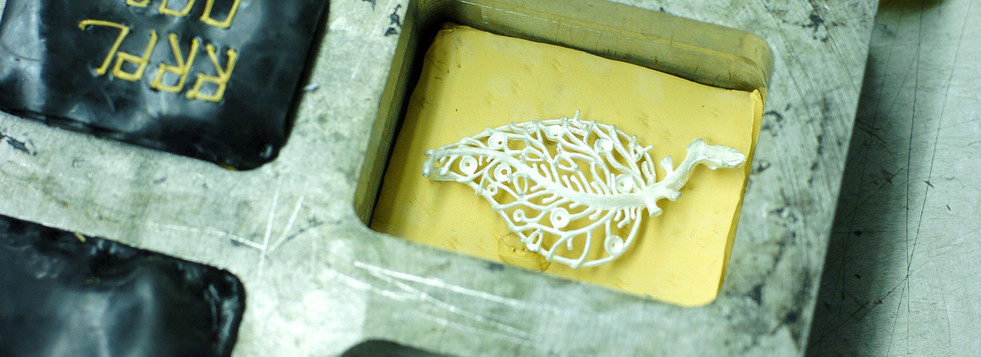We have a fully kitted out factory with all the machinery needed for a complete silver production line.These photos will take you on a virtual tour and show you the kind of work that goes into every piece.Starting with our mold and wax workshop through to the casting plant, and then on to our silver-smithing and setting rooms, polishing, chemical treatment, electro-forming workshop and finally to the HQ and our packing department.Want to see it for yourself? We welcome visitors; our address is located at the bottom of the page! If you would like to learn more about our production please do not hesitate to ask, you can forward all questions to
We are all about natural stones, gems and minerals, they are our passion and what this company was built on. We are proud to be one of Thailand's leading lapidary workshops.We import rough material from all corners of the globe. We use our advanced machines for slicing, calibrating, and shaping these materials into the finished pieces you will soon fall in love with.
Jewelry is all about attention to detail, and we acknowledge the importance of the research that goes into a new piece or collection, second only to creativity.We are always learning, evolving, broadening our skill set and taking on new ideas to create these beautiful collections.The proof is in our finished products. Please check out our gallery here.
The creative jewelry designers and manufacturers are still employing various traditional methods for jewelry production. Wax casting aka lost-wax casting is one of them. This helps in capturing fine details in the pieces of jewelry.
Wax casting is cost-effective and it takes lesser time than many other jewelry designing processes. Also, it allows making multiple pieces of the same jewelry at the same time.
In this process, the wax is ‘lost’. That is why this method is called lost wax casting. Here we will be discussing this process in a compact way.
-
Model-making - An artist creates an original model from wax.
-
Mould-making - A mold of the sculpture or original model is made. The tough exterior molds contain the softer interior mold. The soft mold is the exact negative of the original model.
-
Wax - Molten wax is poured into the prepared mold. Then it is swished around until there is an even coating. The coating usually needs to be about 3 mm (1⁄8 inch) thick. This method is repeated until the desired thickness is there.
-
Wax removal - This hollow wax copy is then removed from the mold.
-
Chasing – Then every single hollow wax copy is "chased". Chasing means using a heated metal tool to rub out the parting line where the pieces of the mold come together.
-
Spruing – Here, the wax copy is sprued with a treelike wax structure. The precisely planned spruing generally starts at the top with a wax "cup," that is connected by wax cylinders to different points on the wax copy.
-
Slurry – In the next step of wax casting, the sprued wax copy is dipped into the slurry of silica and then into the sand-like stucco. The slurry and grit combo is called ceramic shell mold material.
After this shell dries, this coating process repeats until a half-inch coating covers the entire piece. -
Burnout - The ceramic shell-coated piece is then placed cup-down on a furnace. The heat hardens the silica coatings, and the wax runs out.
-
Testing - In this stage, the ceramic shell is allowed to cool down and then is tested. Cracks and leaks can be fixed with thick refractory paste.
-
Pouring - The shell is reheated. Metal is melted and then poured into the shell carefully.
-
Release - The shell is hammered.
-
Metal-chasing - This process makes the casting look like the original model.
Goldlip is a reliable jewelry manufacturer and supplier in Thailand. You will love their pieces of jewelry produced by wax casting. Visit goldlipjewelry.com to contact them.







